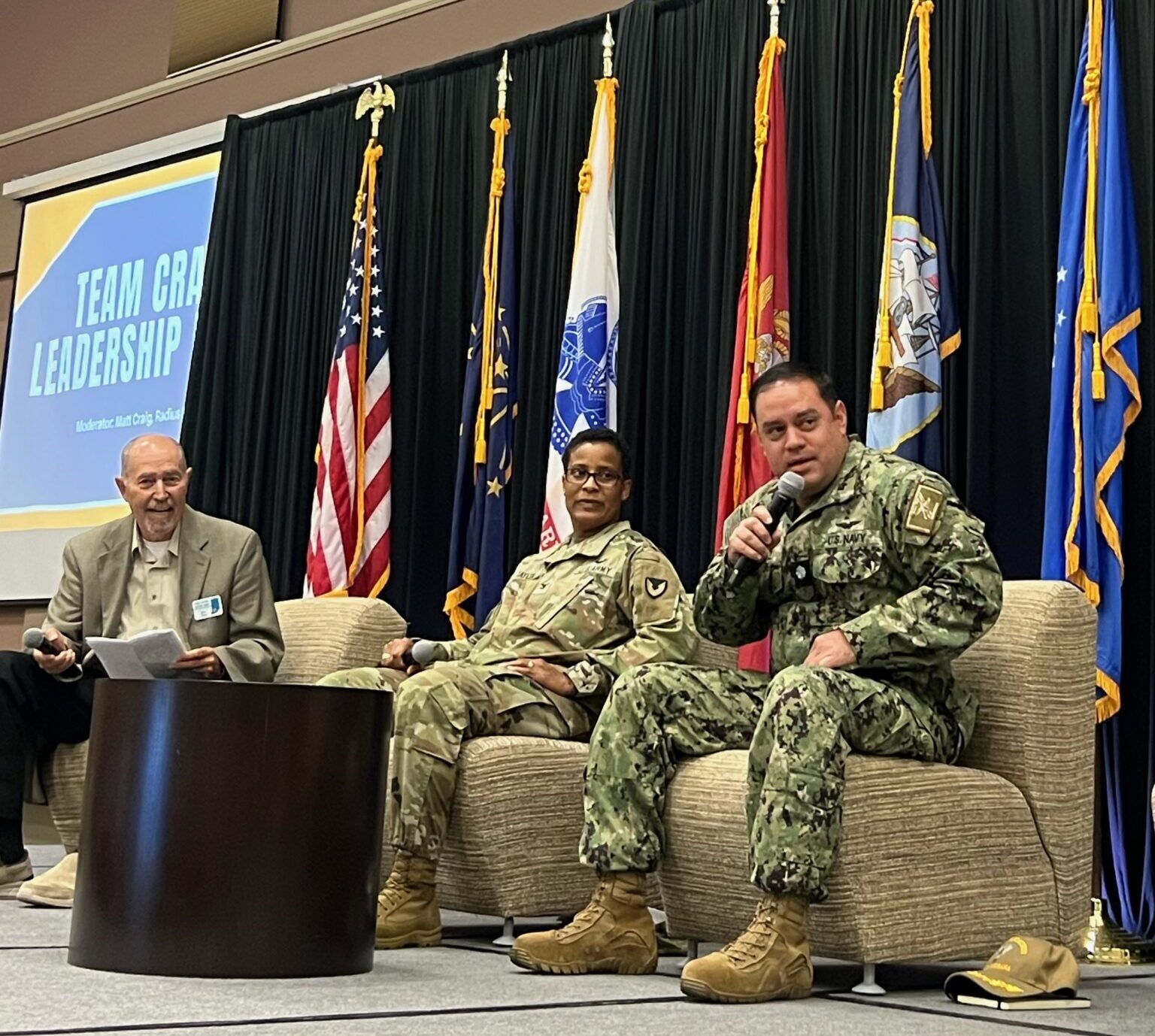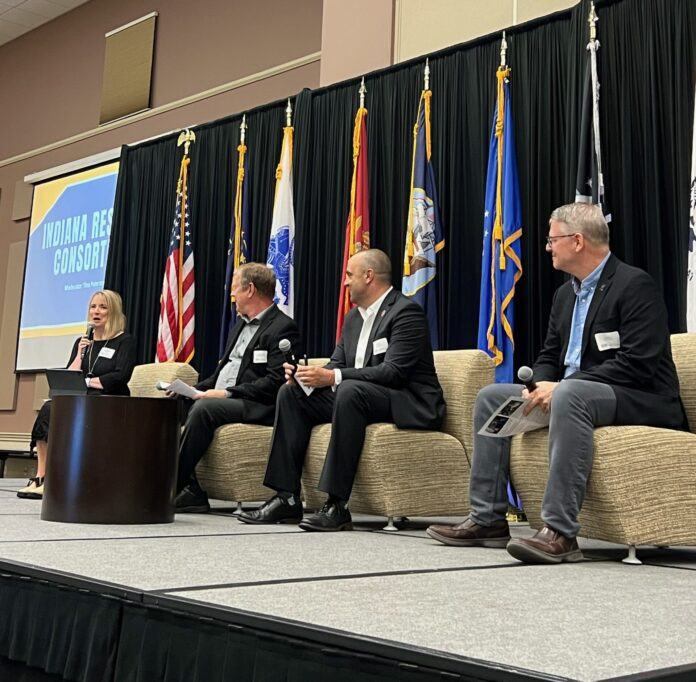Carol Johnson, Southern Indiana Business Report
ODON – Members of a regional research engine created to drive innovation and advancement in the defense sector provided an update last Thursday to stakeholders of the Crane Regional Defense Group.
The Indiana Research Consortium – a joint partnership of Notre Dame, Indiana University and Purdue University – formed in June to capture the combined strengths, facilities and capabilities of the state’s three leading research universities and apply that to defense.
Regional Opportunity Initiatives President and CEO Tiina Peterson moderated a panel discussion held at WestGate Academy featuring:
- Lawrence Buja, chief program development officer at Purdue University
- Scott Bullock, director National Defense R&D Relations at Indiana University
- Edward Maginn, associate vice president for research at University of Notre Dame.
Peterson said the IRC is very much a start-up, but a lot of progress has been made.
The IRC universities are home to world-leading graduate engineering and science programs advancing principles that translate to real-world applications for the Department of Defense.
The three universities doing high level work is not new. In fact, Buja pointed out that NSWC Crane has, for decades, successfully worked with the state’s research universities, but has done so individually.
“Each of these universities have their own strengths and expertise and at the same time, they share core capabilities that complement each other,” Buja said. “For example, each recognizes the importance of advancing their defense research portfolio.”
IU, Purdue and Notre Dame have invested millions in hiring the best faculty and building infrastructure to support secure research.
The healthy competition among the universities created a missed opportunity, Buja said, to work together for even greater advancements.
The IRC will evolve in phases the panelists referred to as “crawl, walk, run and fly.” Currently the IRC is in its crawl phase. But Buja said once the consortium is flying at full throttle, the IRC will do for our national defense what institutions like Johns Hopkins University and others have done for medical research.
Buja said “fly” will be the result of long-term collaboration among the universities and regular communication with the DoD. A close partnership with Naval Surface Warfare Center Crane will be critical to the new technologies that will develop out of the IRC.
The IRC’s focus areas are
- Secure microelectronics
- Hypersonics
- Energetics
- Cyber-physical resiliency
- Workforce development
Bullock said a series of workshops are scheduled for each of the focus areas with expertise from Crane and the universities to generate proposals. A microelectronics workshop has already taken place.
Maginn addressed the workforce component of the effort saying people are the most crucial resource.
“In this region, we want to keep the people we train in the latest technology and education here in Indiana. Our students have to know they have a future career here,” said Maginn.
Having three research universities and a federal lab like NSWC Crane in one state is a “unique capability” for Indiana.
“We don’t want to fight each other and compete when it comes to working together to solve problems,” Maginn said. “The message for you all is if you have an idea and you want to work with a university and don’t know who to turn to, we can help you find resources.”
Crane leadership panel
CRDG stakeholders heard insights into current operations at NSA Crane during a second panel moderated by Matt Craig, director of Crane Community Support for Radius Indiana.

The panel featured NSA Crane Cmdr. Luis “Homie” Martinez and Crane Army Ammunition Activity Col. Fran Taylor.
Craig covered several topics, including how the base is positioned for future growth.
Martinez said the role of NSA Crane is to support NSWC and CAAA to do their best work and that means having solid infrastructure.
“We have very old infrastructure here from World War II and that needs to be upgraded,” he said. “If I don’t provide those infrastructure upgrades to our partners, the warfighter is ultimately affected by that.”
NSA Crane was established in 1941 and some parts of the base haven’t changed much.
A modernization plan will bring a $100 million investment to CAAA. The US Army will build a new pyrotechnics production facility.
Taylor said while the Army is committed to modernizing facilities, it’s the role of CAAA leadership to cultivate the workforce to sustain CAAA’s mission. She stressed the importance of partnering with local schools about the job opportunities at CAAA.
CRDG President Kent Parisien hosted the event and gave an overview of the organization’s accomplishments of the past year. Nearly 100 organizations representing 15 states are members of CRDG.
The final Connect to Mission (C2M) event of the year will be Tuesday, Nov. 5 from 11 am-3:30 pm at WestGate Academy and will feature the NSWC Crane business departments, Crane Army Ammunition Activity and the Public Works Department.



